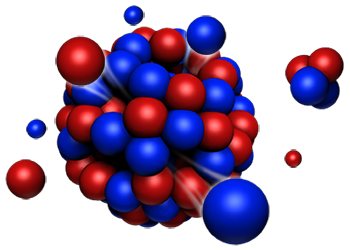Speaker
Description
The U.S. Department of Energy’s Office of Fusion Energy is evaluating options for a Fusion Prototypic Neutron Source (FPNS) to irradiate materials test specimens to high dose in an environment with characteristics that are similar to the first wall of a fusion reactor burning D-T fuel. One of the candidates under study is a spallation neutron source at the Los Alamos Neutron Science Center (LANSCE). Key parameter guidelines for the facility include the ability to achieve a damage rate in iron of 8 to 11 dpa per calendar year with a He-to-dpa ratio of approximately 10 appm/dpa within an irradiation volume of at least 50 cm3. The design proposed for LANSCE employs an innovative annular target with the fusion materials irradiation region occupying the central flux trap inside the annular target. The design employs a well-focused (1 mm rms in both transverse planes) beam painted on the front face of the annular target in an ever-expanding circular pattern 17 times over the course of the 850-μs beam pulse. Assuming 1 MW of 800-MeV protons incident on the tungsten target, calculations indicate a damage rate in iron of 20.6 dpa per full-power year averaged over a 53-cm3 volume. The calculated He-to-dpa ratio in this volume is 14.6 appm/dpa, near the desired value of 10 appm/dpa. The central irradiation zone is divided into three 120° sectors, each with its own independent temperature control, which satisfies another key parameter guideline. To save construction costs, the target station could take advantage of substantial existing infrastructure at LANSCE, including a large experimental hall with two adjacent unused hot cells, and a large amount of steel shield blocks on site. But the real cost savings comes from the use of the existing LANSCE accelerator to deliver 1 MW of proton beam, with only marginal investment in the accelerator itself.

